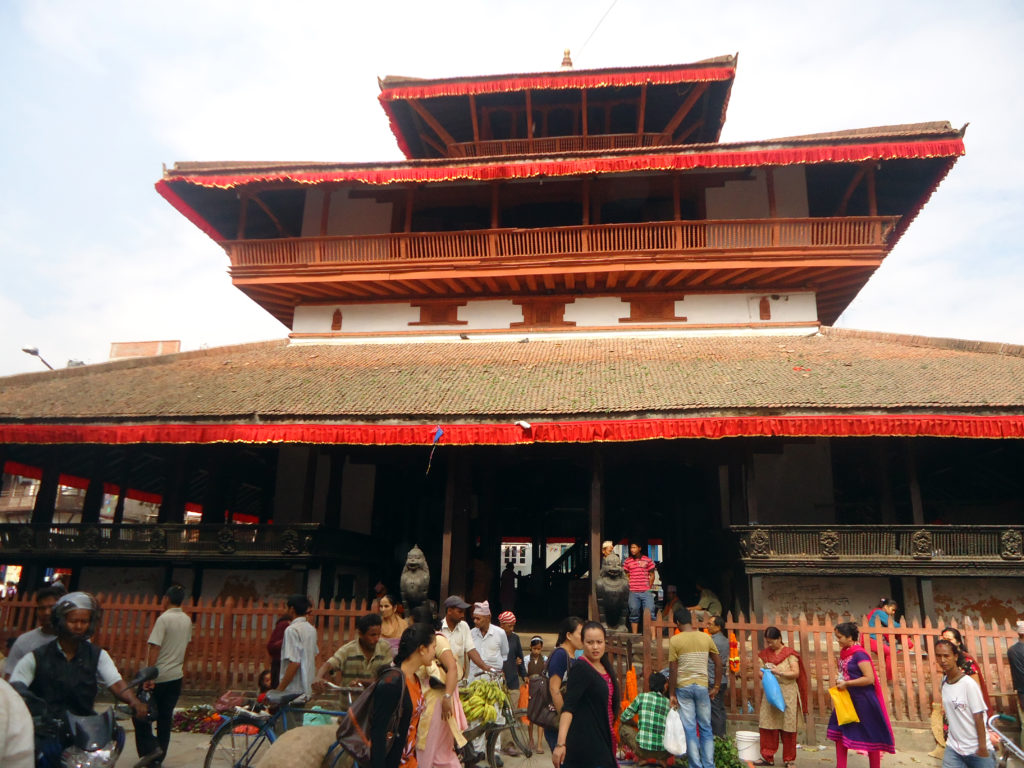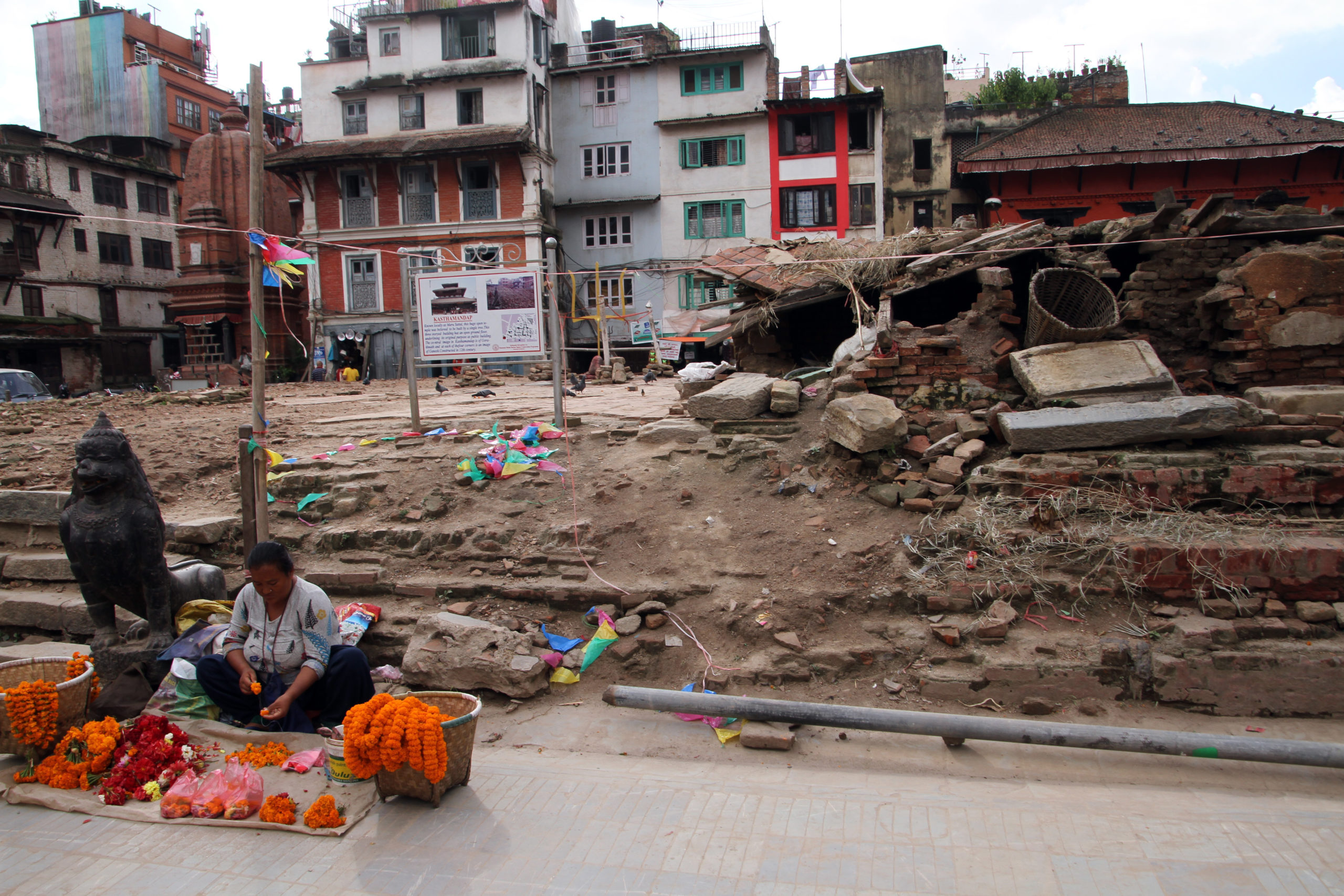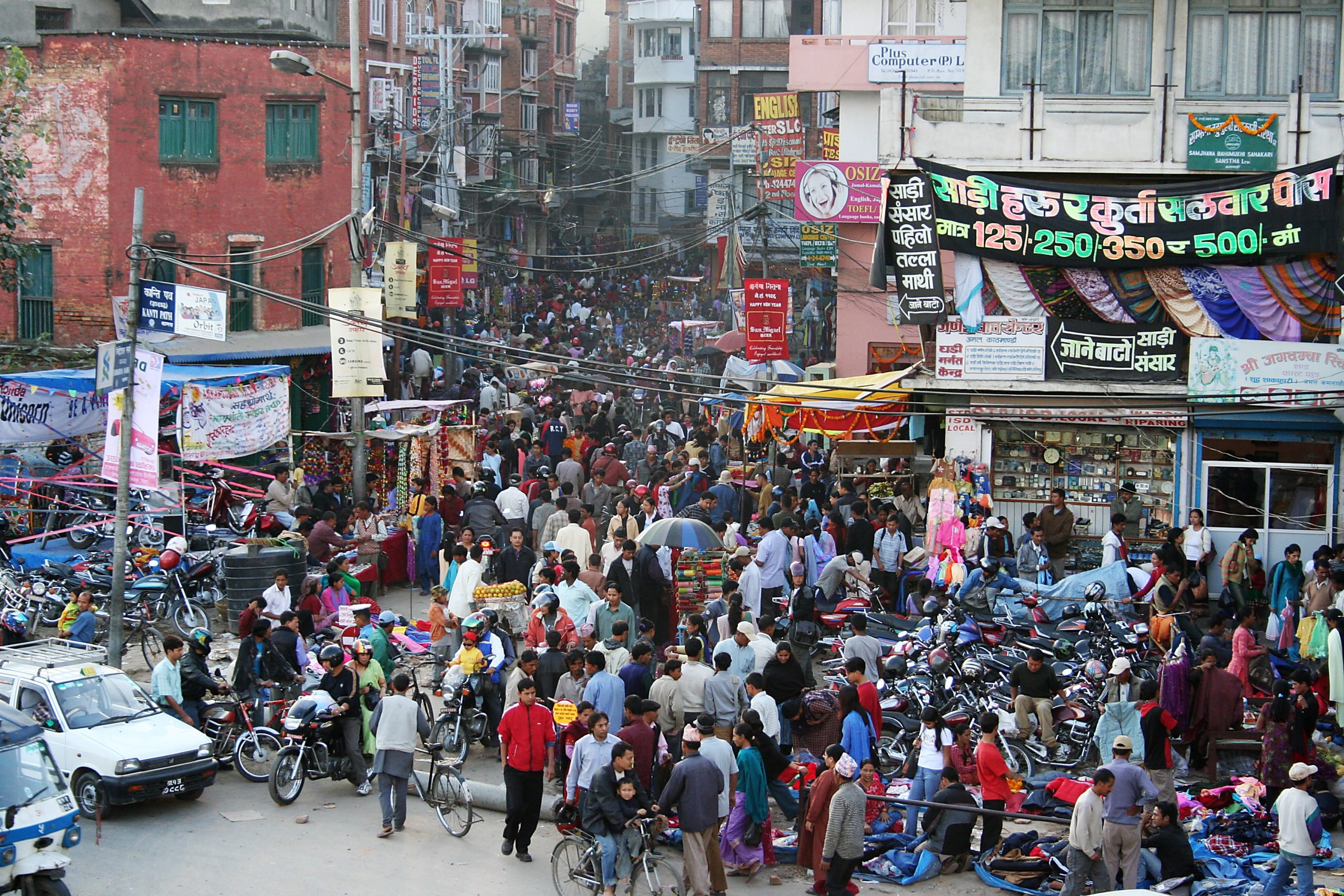Kathmandu: Profile of a Global City
Nestled in a valley just south of the Himalayas lays a dusty metropolis that conjures up visions of spiritual mystery – Kathmandu, Nepal. About three million people call the Kathmandu Valley home. Though located in one of the poorest countries in the world, Kathmandu’s past and present reveals the resilience of the Nepali people as their identity continues to change.

Layout
In the 1500s, three rivalling Malla kingdoms inhabited the valley, divided by rivers and farmland. Central Kathmandu had its own Durbar (royal) Square, populated by palaces and temples – one inhabiting the Kumari, the Child Goddess picked from girls amongst the Newari people group, who are indigenous to the valley. On the edge of the square stood the Kasthamandap, a wooden rest-house built around the 12th century at the intersection of two trade routes arriving at the square. South across the Bagmati River, another king made his own royal square in Patan, which is part of the current municipality of Lalitpur. Farther east from Kathmandu and Lalitpur, a third Malla king centered his empire in Bhaktapur and made his own palaces and temples there. Most of the valley is more than 4,000 feet above sea level.
Now, urban sprawl encompasses all three in a massive conurbation. The city also has spread out to eastern villages like Pashupatinath — a Hindu pilgrimage spot aiming to represent the holy Ganga River to Hindus in Nepal – and Boudhanath – once a country village built around an ancient Buddhist stupa that now attracts thousands every day to circumambulate around the monument to gain merit. Another Buddhist stupa – Swayambhunath – towers over the western edge of the city.
History

Unfortunately, the 7.8 earthquake that rocked the whole valley on April 25, 2015, levelled the Kasthamandap that gave the city its name and damaged or completely destroyed many of the cities’ ancient pagodas, palaces, and temples. More importantly, the earthquake killed nearly 9,000 inhabitants and destroyed nearly 900,000 homes across Nepal.[1]In spite of political instability, corruption, and COVID-19 challenges, post-earthquake Kathmandu continues to rebuild and redefine itself.
Once a prehistoric lake, the Kathmandu Valley attracted the Newar people, and archaeologists have found Sanskrit inscriptions from as early as the fourth century around the valley left by an Aryan Licchavi dynasty.[2]Many unstable kingdoms later, Hindu kings adopting the honorific name “Malla” began ruling the valley in the 12th century and began using the local Newari language for statecraft. The Malla kings also blended Buddhism into their Hindu beliefs, which many Newars continue to do this day. Once united, the Malla kings became the three rival cities mentioned earlier. Prithvi Narayan Shah captured the three kingdoms in the 18th century and formed the united Hindu kingdom of Nepal, with Kathmandu as its capital. The insular Rana dynasty took over Nepal in 1846 and lasted until Nepali nationalists reinstated the Shah line in 1951. Shortly thereafter, Nepal opened up to the outside world, leading to NGOs, tourists, diplomats, and anthropologists arriving to the once isolated valley from the outside world. In 1990, a new constitution ushered in an age of constitutional democracy, but it has been by no means stable. “In the past three decades, Nepal has gone through three constitutions (1990, 2007, 2015), two mass popular movements for democracy (1990, 2006), the massacre of its royal family (2001), a ten-year civil war (1996-2006), and a major earthquake (2015).”[3]The royal family massacre also precipitated the removal of the monarchy in 2008, and Nepal is currently a secular republic run by a Communist-majority national government.

Economy
Nepal is one of the poorest nations in the world, and its economy is struggling to come into its own. A rectangular sliver of land in between the Asian giants of India and China, Nepal relies on imports from India primarily, though China is becoming a more significant partner. Blockades along the India border a couple of times in recent history led to shortages in cooking gas, medicines, and groceries. Nepal is mostly an agrarian country outside Kathmandu, but rice terraces and livestock populate the hills nearby. Most flights in and out of the Kathmandu airport contain men and women from all over Nepal who work overseas to send remittances back to their families. The 2011 census recorded 2 million absentee citizens, and remittances amounted to 30 percent of Nepal’s gross domestic product in 2017-18.[4]Since the country opened its borders in the 1950s, Kathmandu became a popular landing spot for backpackers, and tourism as well as Nepali and Tibetan handicrafts are booming businesses. Infrastructure, especially in electricity, has improved in recent years, but Kathmandu struggles in traffic control, pollution, and overcrowding. China wants better relations with Nepal, but the large number of Tibetan refugees around the Kathmandu Valley is an issue of contention between the two countries.
Christianity
Nepal’s official religion was Hinduism – for a while, the only nation to deem itself so — until the government named it a secular republic in 2008. Still, Christianity is one of the fastest growing faiths, tripling in numbers of converts in the last 15 years. Churches dot the valley landscape, and Christians feel they can be more open in the city than in the countryside. In 2017, however, the government enacted anti-conversion and blasphemy laws to discourage proselytization, and some cases against local pastors are pending.[5]
Despite its many obstacles, Kathmandu is a vibrant, growing city. Attracting foreigners, entrepreneurs, and volunteers to its narrow streets, it has a resilient spirit that teaches those who visit it to face whatever challenges come its way with faith and an indomitable spirit.
[1]Michael Hutt, “The Changing Face of Nepal.” Current History, April 2020, Vol. 119, no. 816, p. 143.
[2]Stacey Fox, “Kathmandu Valley.” Encyclopedia of Asian History, vol. 3, Ainslie T. Embree, ed. Charles Scribner’s Sons, New York, 1988, p. 328.
[5]Kate Shellnutt, “Nepal Criminalizes Christian Conversion and Evangelism,” Christianity Today (October 25, 2017), accessed from https://www.christianitytoday.com/news/2017/october/nepal-criminalizes-conversion-christianity-evangelism-hindu.html on September 28, 2020.
